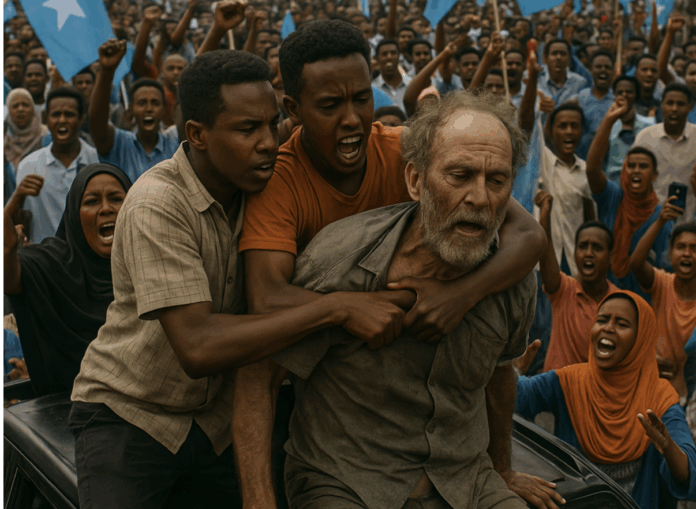May 15 marks the anniversary of the Somali Youth League (SYL), the pioneering nationalist organization that ignited the country’s independence movement. But this year, the commemoration is unlike any other. It comes amid a historic public uprising that has lasted eight months and spread across cities in southern Somalia. Just last month, members of the entrenched mafia regime began fleeing the country one by one.
Mogadishu’s streets are alive day and night. The atmosphere is electric—uncontainable joy and hope fill the air. Led by youth, women, and even bus drivers, the people are broadcasting their revolution live across social media platforms, giving the world a front-row seat.
With no direct flights available, international journalists traveled from Nairobi and beyond—some by land, others by chartered planes—to document this watershed moment in the Horn of Africa.
This morning, the largest crowds yet gathered along Balcad Road. In an astonishing turn of events, the long-hunted leader of the mafia regime was discovered and dragged out of a makeshift underground hideout. It was young activists who first spotted the hiding place—a two-meter-deep hole beneath a large tree—and quickly alerted the public.
The fugitive’s condition was shocking. His body was covered in sores, his hair matted and tangled like weeds. His bald scalp, yellowed teeth, and the general stench of unwashed clothes reflected weeks without hygiene or change. He had been in hiding for two weeks, with no access to clean water or shelter.
As the uprising advanced through the capital’s suburbs, he had tried to form a loyalist militia led by his nephew, who managed the regime’s weapons cache. But even his own family abandoned him. His wives and children fled. Family feuds over lucrative government contracts fractured his household. One of his wives sustained a severe shoulder injury and flew to Dubai for surgery in October 2023.
Rumors swirled that members of his family had conspired against him, and he narrowly survived two assassination attempts. These developments were kept tightly under wraps—had they leaked, the opposition and independent press would have seized upon them.
Initially, his retreat to Balcad appeared to be a strategic regrouping. He hoped to rally tribal support and rebuild his defense forces for a return to Villa Somalia. But the plan failed. The youth-led revolution seized control of Villa Wardhiigley and Eelgaabta Road. The streets now pulse with celebration—freedom songs, honking cars, jubilant women, and TikTok influencers crisscross the area. The scene echoes the early days of the Arab Spring—the fall of Zine El Abidine in Tunisia, the ousting of Hosni Mubarak in Egypt, the downfall of Gaddafi in Libya, and the ongoing struggle against Bashar al-Assad in Syria.
His attempts to mobilize Balcad’s villagers along tribal lines were swiftly rejected. The people of Balcad stood firmly with the uprising. Now, two skinny boys cling to the captured leader’s legs, as a woman in her forties wails behind them. She cries out, “Mother, give me—let me drink his blood!” She is one of the many mothers forcibly evicted from their homes in Mogadishu’s Arwada Taleh neighborhood.
Later today, the country will witness the announcement of a historic public tribunal—the first of its kind. In this court, the people themselves will serve as judges, jurors, and prosecutors. The tribunal will try those responsible for crimes against the nation and its citizens. The first session is scheduled for June 26, a symbolic date marking Somalia’s independence and the abduction of activist Ikraan Tahleel.
The main question now is where this court will be held. One proposal suggests using the Afisyoni Tent, a spacious venue often used for major conferences, ideally suited for swift setup and public attendance.


